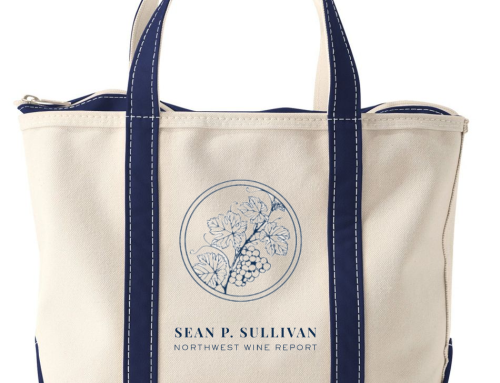
From the beginning of the year to the end of May I have tasted 425 wines that have used a cork closure and that have not been previously screened by someone else (see below). 12 of these wines have been corked. This equates to a rate of about 3%. This rate has been consistent across the year thus far (Note: The number of corked wines is due to double in next month’s report although the overall percentage of corked wines remains about the same).
Again, for my purposes I am just considering 2,4,6-trichloroanisole or TCA. For folks wondering what TCA smells/tastes like the most frequent descriptions are ‘musty’ or ‘moldy newspaper’ or ‘damp basement.’
An important thing to note, as one reader pointed out, is that wines can still be corked without these hallmark aromas and flavors being detectable. Rather the wine tastes uncharacteristically muted and the flavors ‘stripped’ as the taint is at a low level. This is difficult to detect unless one knows what the wine is supposed to taste like (Note: None of the wines below fell into this category).
Additionally, people’s sensitivity to TCA varies, although it can be improved with training. It is also worth noting that TCA can become more apparent over the course of time as other aromas and flavors fade.
For these reasons I would expect that the 3% number I am finding to be more of a minimum percentage than the actual number. There should be minimal false positives (every corked wine has been confirmed by a second person although I am obviously not testing to confirm the actual presence of TCA) but presumably some false negatives (no idea what this number might be).
So again, what constitutes and acceptable number? Let’s say that percentage of corked wines is 3%. Is that okay? Doing the math, for a wine with 300 cases produced, one would expect to find 108 corked bottles. For a wine with 500 cases produced the result is a shocking 180 bottles. I give these numbers because so many Washington wineries make wines at these production levels.
Clearly wineries have varying beliefs on what an acceptable percentage is. Some pay more money for more expensive cork and buy lots of cork that have been tested multiple times for TCA. Some use alternative closures, which are generally more expensive because they believe it is worth the cost.
We know that, when using a cork closure, some percentage of wines will be corked. What percentage is okay and what percentage is too much?
Note: To try to make the count as accurate as possible I have: only included wines that I have personally checked, meaning that they hadn’t already been screened by someone else; and only included wines that used cork as a closure (excluding synthetic corks, glass stoppers, and screw caps).







I use synthetic supreme corqs on all of our wines and have never detected a faulty or even variable wine in hundreds of cases consumed.
We haven't done a scientific analysis but zero is zero.
An interesting test to sort out false negatives would be to open a case each of several wines and taste through them rating variability and defects. My bet would be that natural corks have high variability along with unacceptable defects.
Are you keeping track of where the wines are coming from? I drink on average about 5 bottles of wine a week. In the last year I've had two bootles that were corked and both were from Italy. I haven't had a corked Californai wine for over in well over five years and the last time I did it was three bottles all comeing from the same winery.
Ah… But Osama bin Laube, the wine terrorist, most definitely would have sniffed out far more!
As the owner/winemaker of a small winery producing about 700 cases of wine/year, I consider 3% way to high- that would be 21 cases of corked wine for our production. One badly-corked wine may lose a customer. We bought super premium corks that undergo extensive testing, yet we still get corked wines. I am quite sensitive to TCA and would estimate a higher number than 3% for all the wines I drink (most not made by me). We switched to screw caps a while back, and I have not had a single bottle of wine flawed by the closure since. With Saranex liners the wine ages much the same as with premium corks, and customer acceptance is uniformly enthusaistic.
Joe Miller
Anon 11:49am, I have indeed been keeping track of where the wines come from. Of course what I'm drinking in this setting is heavily skewed toward Washington so not sure how interesting it will be to look at.
I think a lot of the time people associate corked wines with less expensive wines. However, my experiences just this last week shows how untrue that can be. I had corked wines at $70, $35, and $50.
It's not about what is 'acceptable' rate, it's about understanding that the usage of a cork closure entails a 3-5% (TCA) failure rate. If the 'romance' value that cork adds to your wine is worth a 5% of the cost of the wine, then go ahead and use it.
Synthetic corks are the worst possible alternative, screwcaps have market-perception issues (and possibly issues surrounding reduction), diam/technical cork might be a solution, but only time will tell.
I always use synthetic supreme corks, I've noticed that the quality is always much better, mind you, you are paying a hefty premium for it. But lets say 3% of your wine goes bad, isn't the premium worth it, I think so!
Great topic, Sean!
I've been fortunate to taste thousands of Champagnes and sparkling wines throughout my career, and I have only detected one as being corked. One!
I have asked everybody why sparkling wines seem to have such a lower rate of TCA, and nobody has the answer. Not the Champagne producers that I buy from, not the governing body of Champagne (C.I.V.C), not the cork producers, it seems that nobody knows why sparkling wines have less TCA when compared to still wines, but most people acknowledge that this is indeed the case!
Cheers, Bryan
Just came across a great illustration that shows how corks are made:
http://www.wineanorak.com/corks/howcorkismade.htm
Bryan, I've often noted that I have never had a corked bottle of sparkling wine. Who knows the answer why?!?
Anon, in terms of "understanding that the usage of a cork closure entails a 3-5% (TCA) failure rate," I don't think the vast majority of consumers will either have any idea about this or know what the profile of a corked wine is. They will just think the wine is flat out bad.
I believe there are really two separate questions – what is an acceptable rate for wineries in terms of damage to consumer perception and what percentage of corked wines are consumers willing to put up with as the cost of drinking wine with a cork closure?
For the last three years, I managed a busy winery in California where we opened about 100 bottles for pours per week. The staff was trained to sniff/taste every newly opened bottle before pouring. From my experience there and also other bottles that I traded for at other wineries (many very high end), I think that 3% is a very realistic number for corked bottles. We rarely had bottles returned however so I believe that most consumers either don't know what "corked" is or they are embarrassed to complain.
Most of the time when I poured an ounce of corked wine for customers to smell and see just what corked was, they were surprised to learn about it. One Portuguese man liked it corked saying that's how they made wine in Portugal.
To each his own I guess!